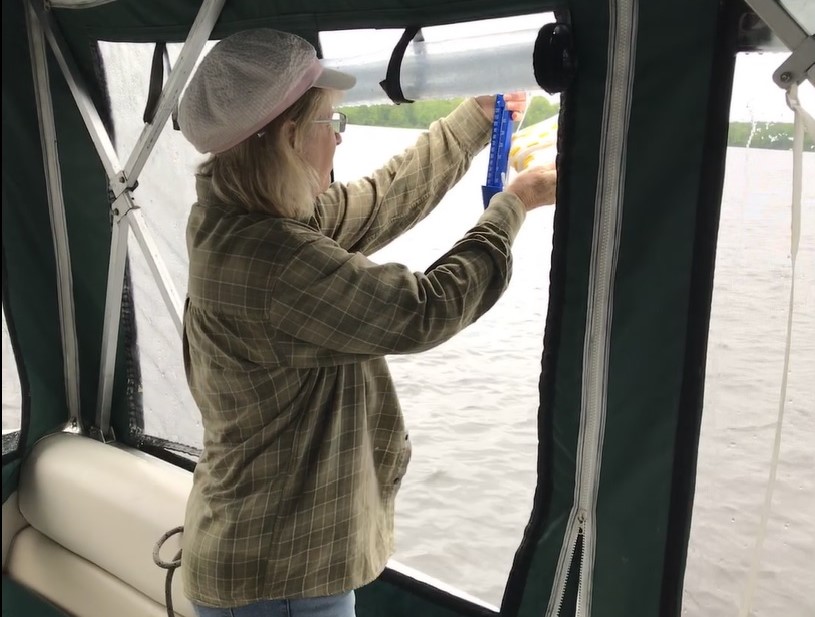What Are Algae Doing in Muskoka’s Lakes?
By Peter Sale

Responding to considerable community interest, the Muskoka Watershed Council wants to find out what algae are doing in Muskoka lakes.
These tiny single-celled plants thrive in enormous numbers in the waters of every Muskoka lake. If they were not there, our lakes would be remarkably clear (though perhaps still ‘tea-stained’) and remarkably dead! Through their photosynthesis, algae form the base of the lake food-web, supporting the still tiny, but multicellular, zooplankton that provide food for fish and other lake inhabitants. Algae also release oxygen to the atmosphere that we and other animals breathe (worldwide, algae produce half of all atmospheric oxygen). Without algae, our lakes would be sterile places essentially devoid of living things, and we’d be panting for breath.
The algae are an amazingly rich and varied array of species of several different types, all with fascinating stories to tell. None are closely related to the plants familiar to us, but, like all plants, algae contain chlorophyll, enabling their photosynthesis, and some contain other pigments as well. Their populations can grow very quickly when conditions are favorable, but different algal species require slightly different environmental conditions. As lake conditions change through the year, some algae will be becoming quite common while others are languishing or disappearing. Nearby lakes will show different patterns of algal abundance if they provide different conditions or patterns of change.
Occasionally, conditions become so perfect that one or more algal species become hugely abundant, producing a scum of ‘stuff’ in the surface waters. Such an algal bloom can be noxious in appearance, odor or taste, and sometimes can also release toxins. Blooms typically disappear within days or weeks because the huge numbers of algae use up available nutrients and die. Sometimes, in dying and rotting, they consume all available oxygen in the water. Suddenly fish end up dead and floating at the surface or piled in drifts along the shore.
For people, algae are ‘good’ (even ‘essential’) so long as they don’t misbehave and bloom. When they bloom, we want them gone. But Nature does not always do what we want and wanting them gone is a lot easier than being able to make them go away. Mostly, we must wait patiently for Nature to ‘get back to normal’.
Muskoka’s lakes are remarkably free of algal blooms with high-quality waters that are the envy of people elsewhere. Still, blooms do sometimes occur here, and people worry that climate change may alter conditions in ways which make them more likely. Warmer lake temperatures, longer ice-free periods, and declining nutrient levels all may favor the blue-green algae (or Cyanobacteria), the very species that can be toxic when they bloom; not something we want to see.
So how prevalent are blue-green algae in our lakes and are they becoming more common as climate changes? The short answer is we don’t know!
Despite commendable efforts by numerous citizens in monitoring water quality across Muskoka, monitoring of algal abundance has seldom been done except by scientists, particularly MECP scientists based at the Dorset Environmental Science Centre who have monitored a small number of lakes intensively since the 1970s. Why aren’t lake associations monitoring algal abundances? Because this is a particularly complex task that had not seemed necessary until recently. But a new project is under way that could change that.
In collaboration with the Leonard Lake Stakeholders Association, Muskoka Lakes Association, Peninsula Lake Association, and Three Mile Lake Association, Muskoka Watershed Council is testing techniques for monitoring algal abundances from early June through mid-October. If successful, the procedure will be offered to interested lake associations to add to their water quality monitoring effort in future years. Stay tuned.
